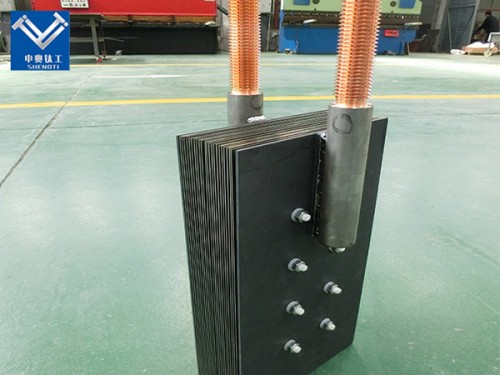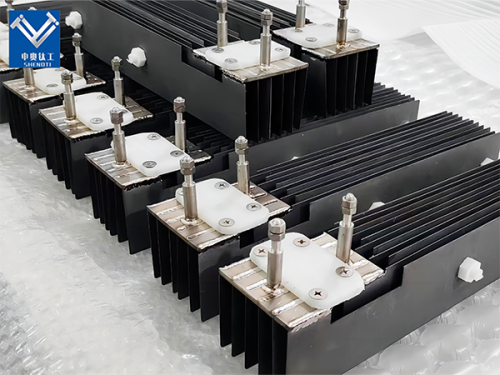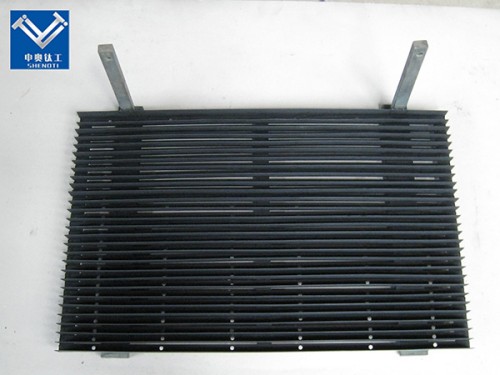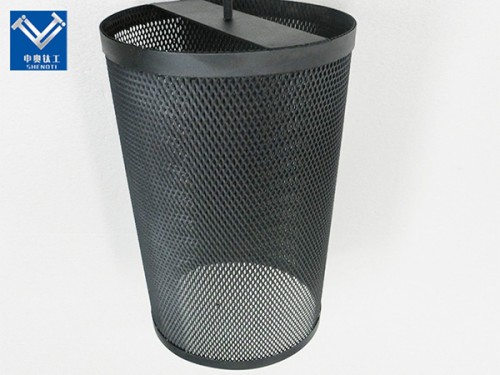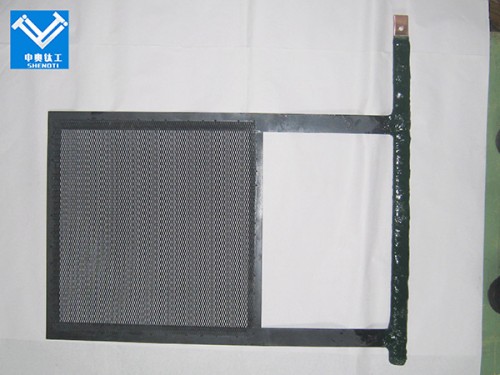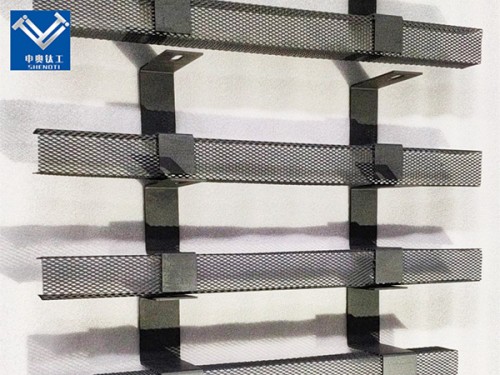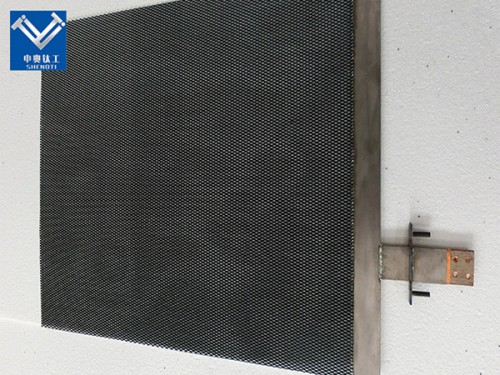
How does ruthenium coating enhance titanium anode performance in wastewater disinfection?
2025-06-10 16:12:17
How does ruthenium coating enhance titanium anode performance in wastewater disinfection?
Ruthenium coating enhances catalytic activity by promoting key oxidative reactions, such as:
Generation of reactive chlorine species (RCS):
RuO₂/Ti electrodes facilitate chloride oxidation to hypochlorous acid (HOCl), chlorine radicals, and molecular chlorine—potent disinfectants effective in destroying pathogens in municipal and industrial wastewater.
The ruthenium oxide surface reduces overpotential for chloride oxidation, increasing energy efficiency and disinfection rates compared to bare Ti or mixed metal oxide (MMO) anodes.
Indirect oxidation via hydroxyl radicals (•OH):
RuO₂ supports formation of surface-bound •OH, which can mineralize organic contaminants and inactivate microbes.
The porous, conductive ruthenium layer adsorbs water and hydroxide ions, enabling rapid •OH generation under moderate potentials.
Oxygen evolution suppression:
Ruthenium-laden surfaces redirect electron flow toward pollutant oxidation rather than oxygen evolution, thus improving current efficiency for disinfection.
Mechanistically, ruthenium oxide coatings create more active catalytic sites, enhance electrode conductivity, and stabilize intermediates involved in oxidative pathways. These enhancements translate into up to 30–50 % higher disinfection efficiency under identical energy inputs.
How long does the ruthenium coating last under operational conditions?
Durability is a core concern for titanium anodes in wastewater environments. The key mechanisms affecting lifespan include:
Electrochemical corrosion:
RuO₂/Ti electrodes resist passivation and resistive breakdown due to their stable oxide lattice and strong metal‑oxide adhesion.
Daily operation over 500–1,000 hours often yields <5 % performance loss—far better than uncoated Ti.
Mechanical abrasion and fouling:
Wastewater often carries solids, grit, and biofilm-forming organisms. Ruthenium coatings are typically applied via thermal decomposition or sputtering to create dense, nano‑textured layers that resist abrasion.
Periodic cleaning (e.g., back‑washing, mild acid rinses) preserves activity and prolongs useful life to 2–5 years in full-scale treatment plants.
Chloride and high‑ionic environments:
Chloride-rich effluents can erode unprotected electrodes, but RuO₂ formation suppresses pitting corrosion, maintaining electrode integrity.
Studies report stable performance in saline wastewater up to ~50 g/L Cl⁻ with low ruthenium leaching (<1 ppm/year).
Is ruthenium‑coated titanium cost‑effective for full‑scale wastewater treatment?
On face value, ruthenium is a precious metal and thus expensive. But economics tell a different story when considering performance gains:
CapEx vs OpEx tradeoffs:
Coating increases initial capital cost by ~20–40 % over bare Ti, but disinfection efficiency boosts of 30–50 % can cut energy usage and treatment time significantly.
Retrofitting existing electrolytic reactors with ruthenium‑coated anodes is often simpler and more cost‑effective than replacing entire systems.
Energy savings & environmental benefits:
Faster disinfection means shorter reactor residence time or lower current draw—energy costs drop proportionally.
Reduced chemical coagulant or chlorine dosing further lowers operational expenses and chemical handling risks.
Lifecycle cost modeling:
Over a 5‑year service life, the total cost per cubic meter treated can be 10–25 % lower than with conventional anodes, especially in high-throughput or saline wastewater scenarios.
So while the upfront cost is higher, the operational gains make ruthenium coatings financially attractive—especially where energy and throughput are limiting factors.
Mechanistic insights into catalytic enhancement
Lower overpotential: RuO₂ reduces voltage thresholds for both chloride oxidation and direct organic degradation.
Increased surface area: Nanostructured Ru coatings from hydrothermal synthesis improve active site density.
Electron transfer kinetics: Ruthenium’s conductive oxide improves charge transfer and catalytic turnover.
Empirical studies and performance metrics
Comparative trials demonstrate disinfection rates of 4‑log (99.99 %) microbial reduction within 5 minutes—double the speed of bare Ti.
Energy consumption drops from 0.5 kWh/m³ to ~0.3 kWh/m³ under ruthenium-enhanced operation with similar microbial kill rates.
Coating thickness optimization (~0.5–1 µm) balances cost with catalytic activity.
Lifespan under real‑world conditions
Testing in saline industrial effluent over 1,500 hours showed <10 % decline in microbial reduction efficacy.
Annual maintenance includes physical cleaning and occasional acid pulse to remove scale—coating retains functionality.
Contact Us
If you'd like to learn more about implementing ruthenium‑coated titanium electrodes, scaling wastewater treatment systems, or discussing a pilot project, get in touch:
Baoji City Shenao Metal Materials Co., Ltd. Email: zh@baojiti.com.cn
YOU MAY LIKE











